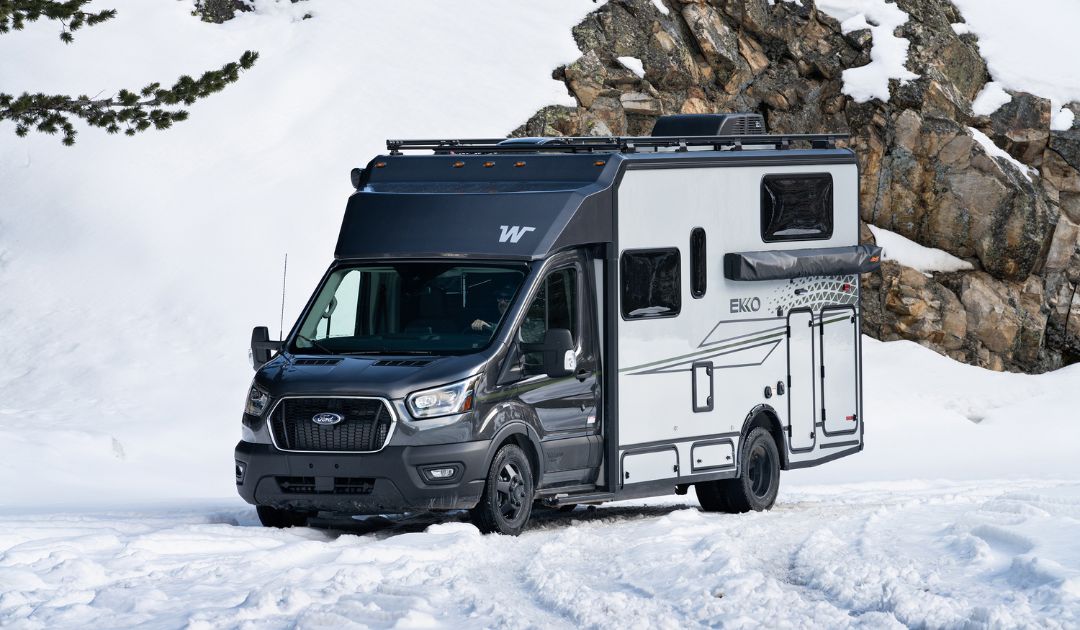A Little Winterization Goes a Long Way (Provided You Do It Correctly!)
If you’re not planning to store your RV in a climate-controlled indoor facility, then you must winterize it at the end of the season. Every single RVer has heard horror stories of what can happen to improperly winterized RVs: burst pipes, gelled diesel, burst tires and plenty more!
We’ll save you the tales of terror. Instead, we’d like to take a look at some of the most common mistakes RVers make when getting ready for the winter.
Waiting Too Long
We get it: everyone wants RV season to last as long as possible, especially if the weather is nice! Provided things stay sunny enough in August and September, it can be easy to get a little too trusting of the weather.
Unfortunately, this means you’ll potentially have your guard down when the cold weather finally does show up, which is a recipe for disaster. Even if you plan on extending your RV season slightly, it’s still a good idea to purchase antifreeze and get your plans lined up, so you’re ready to winterize when it starts snowing.
Not Flushing ALL Your Water Lines
Even the greenest of newcomers know it’s important to blow out an RV’s water lines using compressed air, along with filling those lines with antifreeze. What many newcomers can slip up on, however, is keeping track of every water line in their motorhome.
At the beginning of the season, it’s helpful to do a walkthrough and make a checklist of every water line in the RV so you can be properly thorough when it comes time to winterize. Water sources like washing machines and ice-makers can be easy to forget when you’re in a hurry to pack up at the end of the season.
Leaving the Batteries
Dead batteries contain plenty of water that can freeze when temperatures get too low. Even worse, batteries can effectively destroy appliances if they freeze inside them. When winterizing your vehicle, make sure to take out ALL of the batteries from your vehicle and store them somewhere indoors.
When we say ALL of the batteries in your vehicles, we mean it. Don’t forget you car batteries or the batteries in your remote controls and smoke detectors.
Forgetting to Empty Your Cabinets
There’s a running theme to these mistakes: things with liquids in them can explode if they’re left to freeze. This isn’t limited to beer bottles and water pipes either; just about anything with a liquid component can turn into major headaches if left unchecked.
Freezing is one of those “better safe than sorry” things if you’re not sure about an object or appliance in your car. As a general rule of thumb, it’s significantly easier to move a wine bottle indoors than clean up the after-effects of a wine explosion in your RV.
Of Course, You Can Always Skip the Hard Parts…
Remember when we mentioned indoor storage as an alternative for fully winterizing your RV? Let’s take another look at that.
While there are still some steps you need to take when checking your RV into off-season storage, there’s nowhere near the same level of concerns and considerations. Even better, a good indoor RV storage facility will be able to help you with the winterizing (and de-winterizing) process, letting you skip the hard parts of wrapping up the RV season.
Between sophisticated climate-controlled storage systems and secure 24/7 security monitoring, at NIRVC, we keep our client’s RVs in perfect condition through the off-season. Learn more about indoor RV storage at NIRVC.
Want to know what you should look for when considering storing your RV? Check out this blog post!

